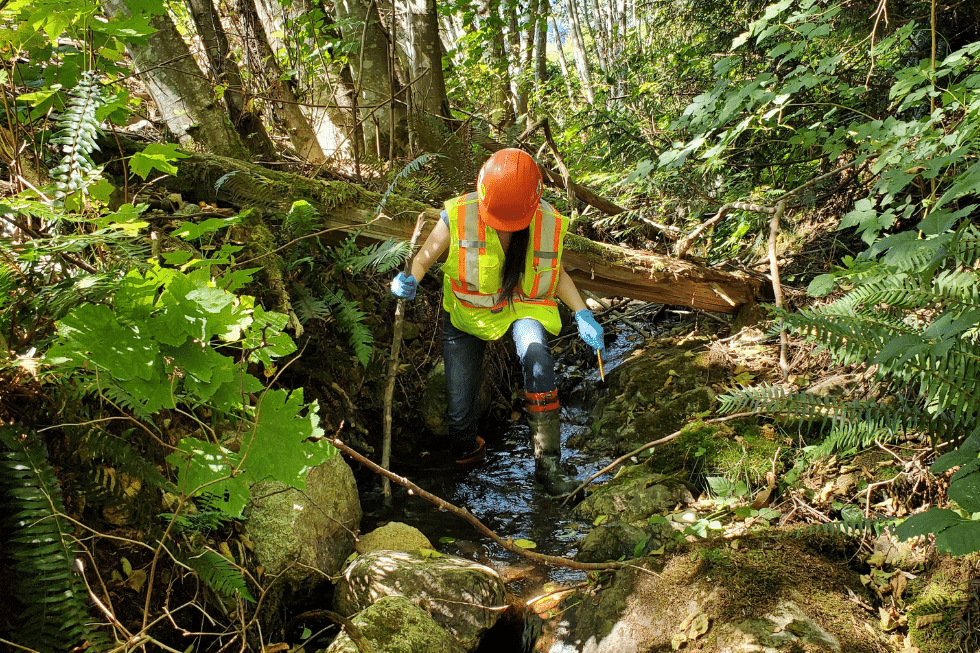Keystone Environmental provides services that address the provincial Riparian Areas Protection Regulation (RAPR). Here are the most common questions and answers to help you learn more about our RAPR services and how we can support you on your next environmental project.
Question 1: What is RAPR and its purpose?
Answer: The Riparian Areas Protection Regulation or RAPR (formerly the Riparian Areas Regulation,) is a provincial regulation with the objective to protect the features, functions, and conditions that are vital for maintaining stream health and productivity.
Functionally, the RAPR prescribes appropriate Streamside Protection and Enhancement Areas (i.e., SPEA; often informally referred to as stream or riparian setbacks).
Question 2: What does “stream” mean in the context of the RAPR?
Answer: Under the RAPR, a stream includes any watercourse (including ditches, springs, and wetlands), regardless of whether it usually contains water, that provides fish habitat or contributes to downstream fish habitat.
This means that even a roadside ditch, constructed and maintained by humans, can be considered a “stream” under RAPR and require an associated SPEA be protected during development. Many people are surprised to learn that small watercourses or watercourses that are often dry still require an associated SPEA be protected throughout the development process and afterward.
Question 3: What SPEA (or setback) can streams receive under RAPR?
Answer: Under RAPR, streams receive a SPEA that is between 10 and 30 metres (m) in width depending on the nature of the assessment completed and the biophysical characteristics of the stream. Some types of streams can receive a more specific SPEA, specifically ditches and wetlands. Ditches can receive a SPEA between 2 m and 10 m depending on the biophysical characteristics of the ditch and wetlands typically receive a 15 m SPEA except directly to the south where they receive a 30 m SPEA.
In addition to the above, some assessments (referred to as detailed assessments) also require consideration of specific measures to protect the SPEA from impacts during and after development. In that case, additional measures can apply beyond the minimum SPEA described above.
Question 4: What does RAPR mean for developers?
Answer: Any commercial, residential, or industrial development within 30 m of a stream (as defined by the RAPR) within the geographic boundaries defined by the RAPR, requires that a RAPR Assessment Report be completed by a Qualified Environmental Professional (QEP).
Question 5: What is a Qualified Environmental Professional?
Answer: A Qualified Environmental Professional (QEP) in the context of the RAPR is an applied scientist or technologist who is registered and in good standing with respective professional organization. This includes biologists, engineers, foresters, geoscientists, and certain applied technologists or technicians.
***
Our Biology department has conducted numerous RAPR assessments and reports throughout BC, including locally in Metro Vancouver and the Fraser Valley, as well as in southern BC in Summerland and Penticton.
If you have a development project that requires a RAPR assessment, Keystone Environmental has the staff and expertise to meet your needs. Connect with Jeremy Nilson, Project Manager for Biological Services, to learn more about our RAPR services.

